Patchbay
The most trivial element of this build, motivated as I stumbled upon that 3 RCA socket assembly from an old SCART to A/V adapter. The plate was cut out of the same unidentified plastic (Delrin?) that makes up part of the Lament Configuration and covered with matte black vinyl.
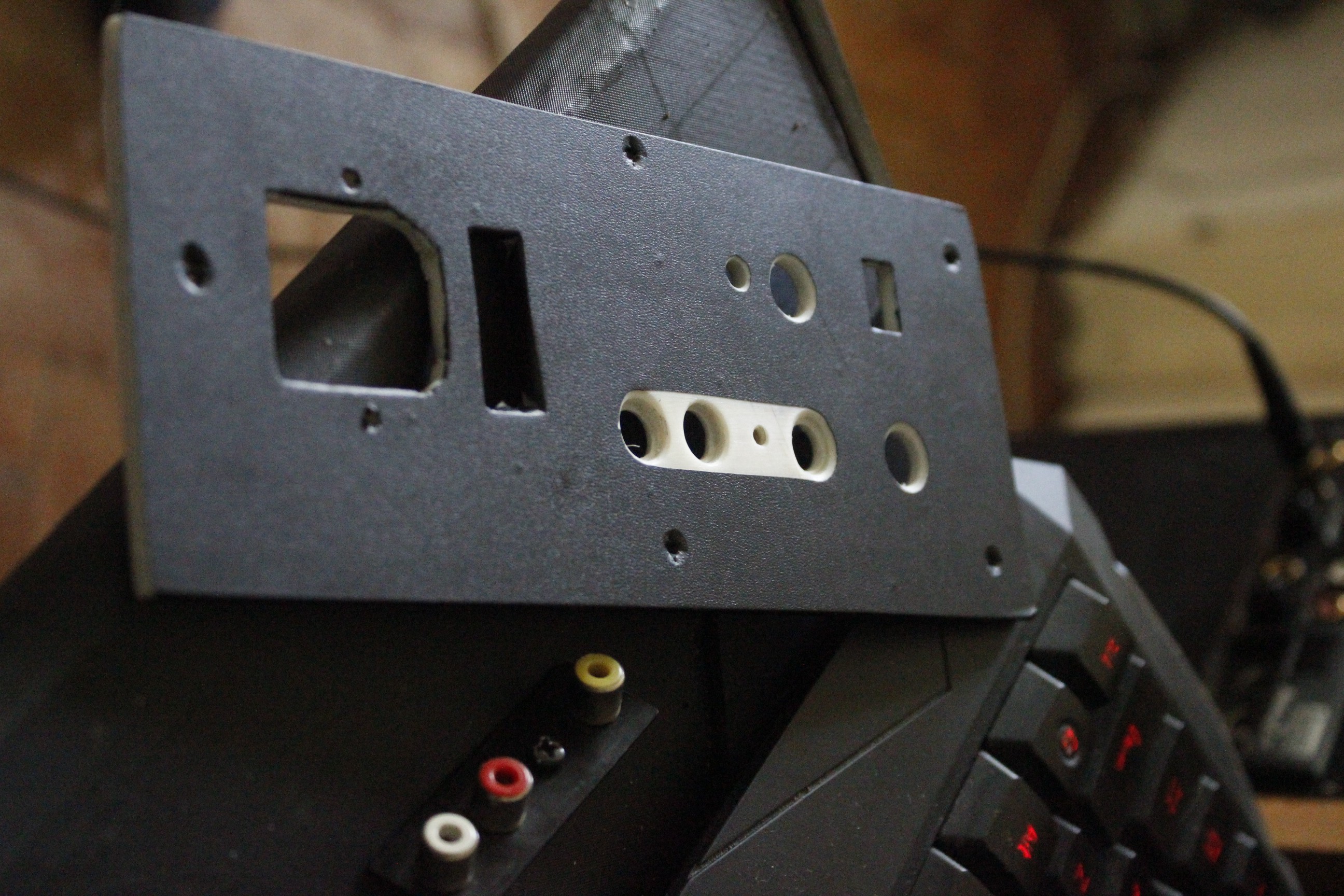
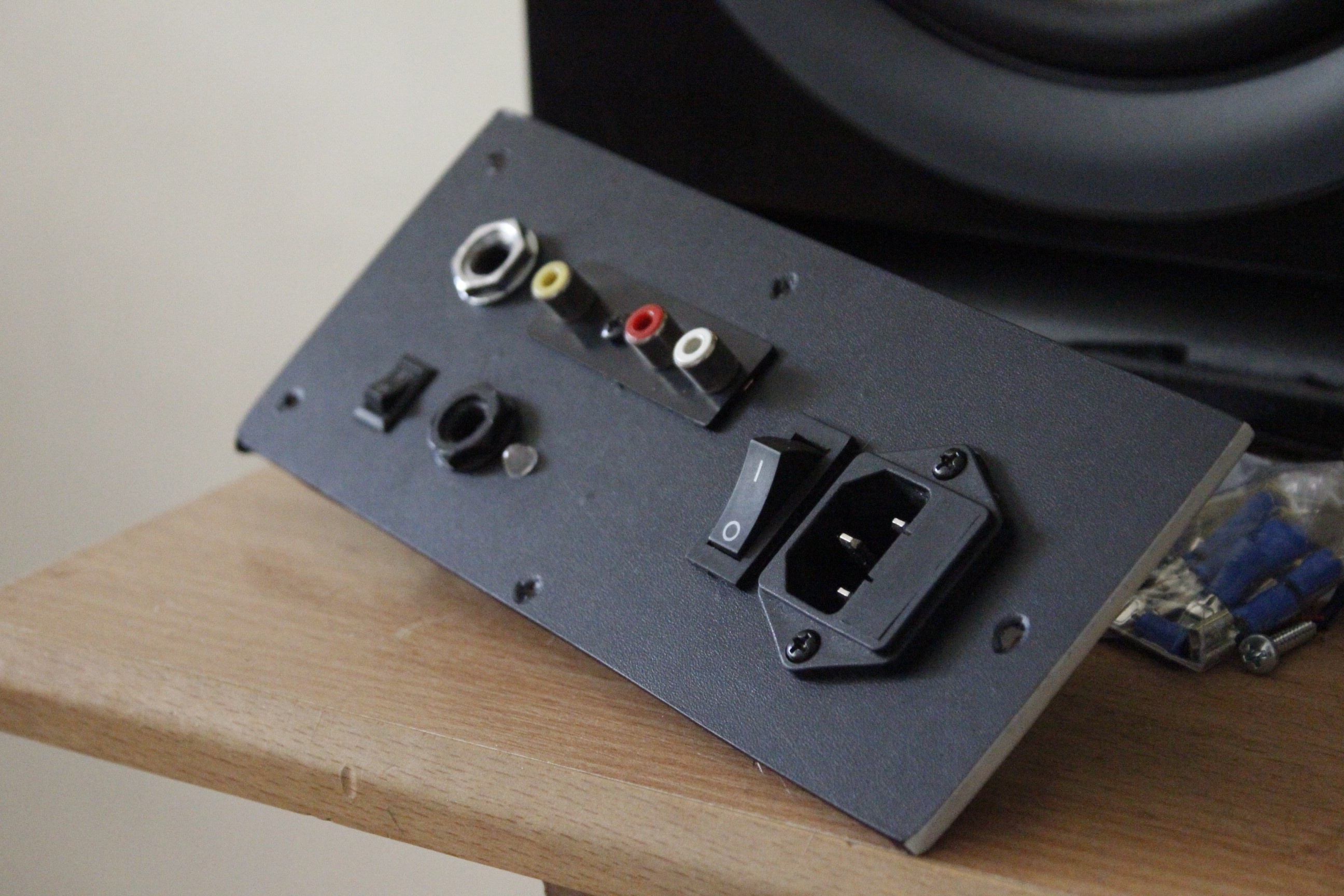
I/O unit
I’ve cut a bit off the PCB and enclosure because the initial preamp/buffer situation that required a separate 9 V supply was too much hassle. Original schematic with the removed preamp part shown in negative color:
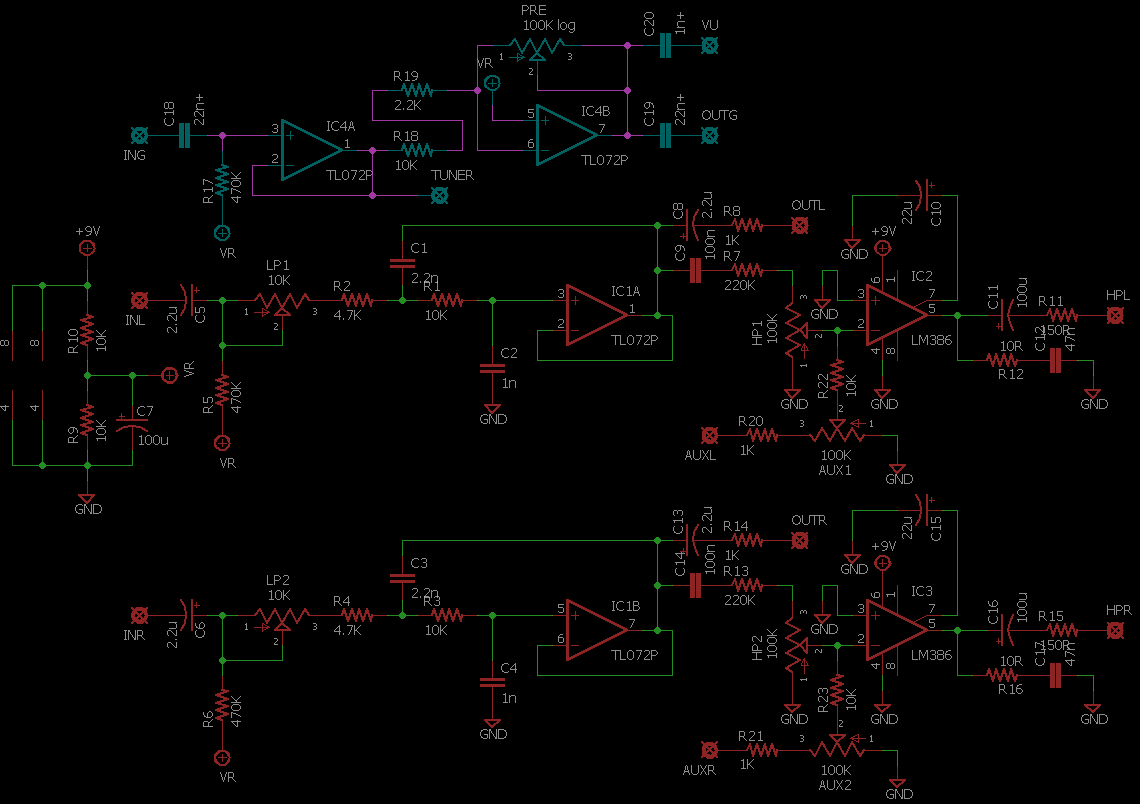
VU meter
The movement from the cheapest analog multimeter, a custom-printed backing and a simple op-amp driver makes a bouncy needle toy.
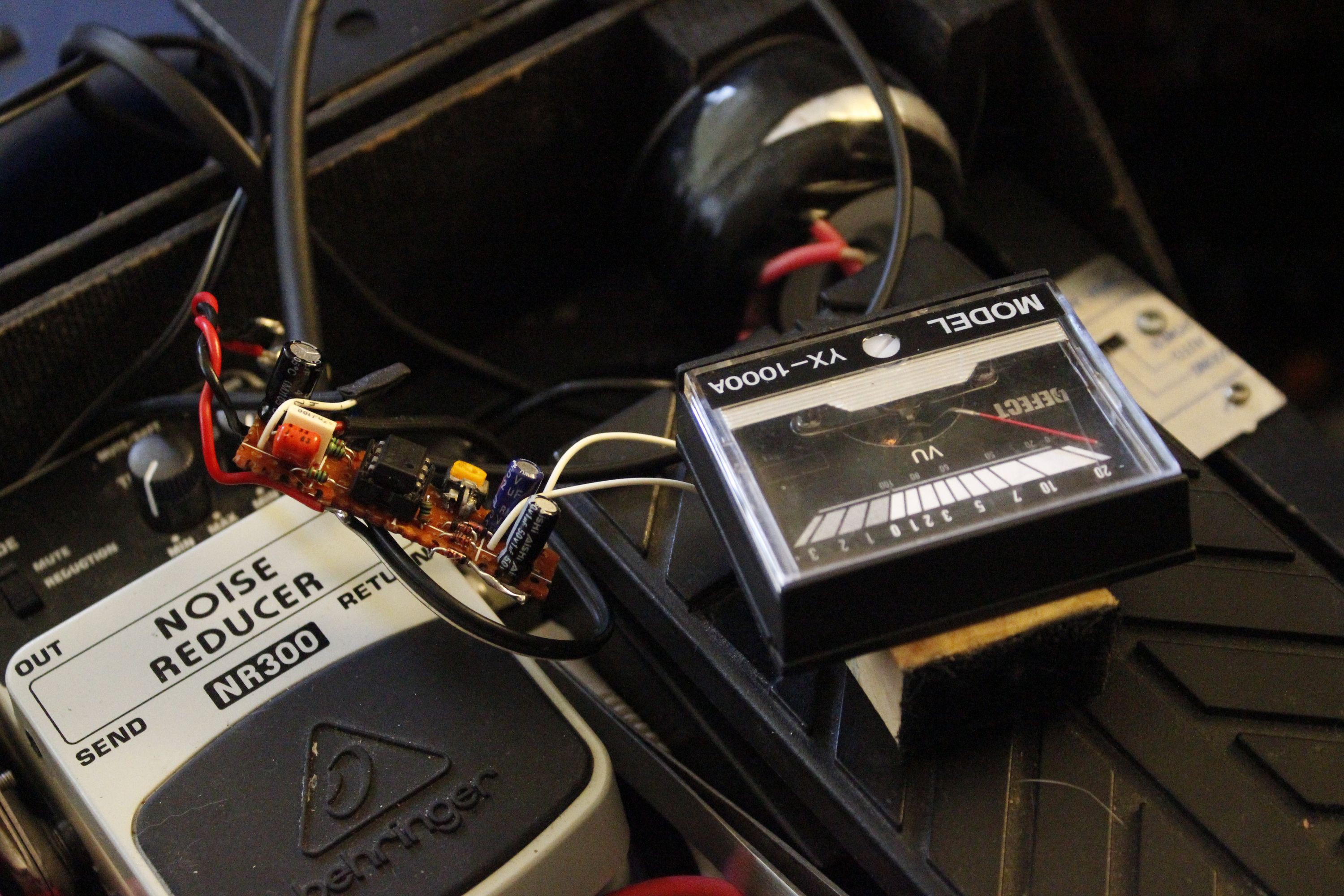
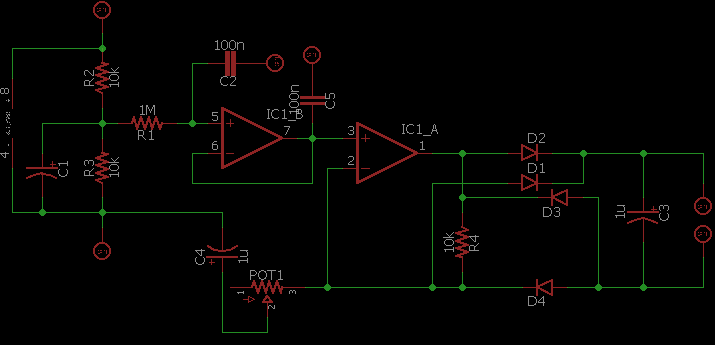
OD
A fairly generic ‘three knob overdrive’ but all the knobs are ‘gain’ controls of sorts. The box had previously housed a distortion prototype but I had even less need for that than an overdrive, so here we are. The schematic is more of a guideline, as I ended up using 47 nF for C4, D1 is actually two antiparallel red LEDs and there’s an extra 1 nF cap across the ‘GAIN’ pot.
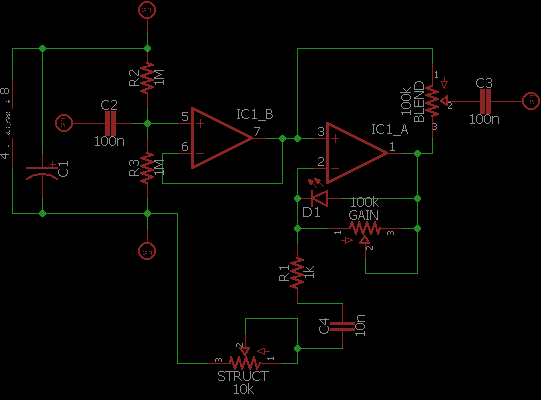
DickButt
A Raygun Youth Chaos Fuzz with minimal modifications like electronic bypass and a couple of extra selection modes. I was very fortunate to find a small 6 position rotary switch in some old BOSS pedal I cannibalized. The enclosure came from the tuner that now sits in the Lament Configuration, and since one non-latching footswitch has been sitting in my parts bin since 2014, I used it for some momentary fuzzy glitchy stabs.
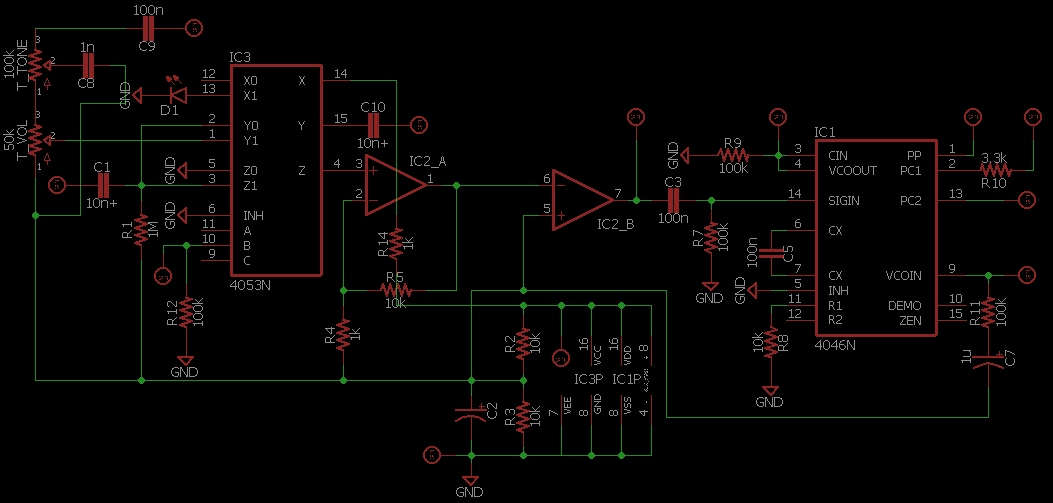
Tube Boomer
One of if not the main purposes of DSP multieffects is to replace big heavy tube amps. But guitar players love to fetishize their gear and a rich mythology has been built around the Tube Sound and how digital (or analog solid state for that matter) simulations could never capture its mysterious essence. Not being one of them, I find myself free of such preconceptions. But I had already built a Soldano SLO type of preamp with two 12AX7s, along with its own power supply, for a different project that got shelved / redesigned. Since I had some room and apparently nothing better to do, I decided to cram it into the pedalboard. I made the aluminium enclosure out of a PC PSU and some wire mesh, but after fiddling with stuffed PCBs running at 300+ V with intermittent contacts and strained wires, I decided to adjust my plans. So “Might as well include this preamp since it’s basically done” turned into a week of frustration as I made the switching system twice and shifted to a hybrid design with one 12AX7 and one op-amp, similar to the Blackstar HT series. This left me with plenty of room for point-to-point wiring for even more mojo.
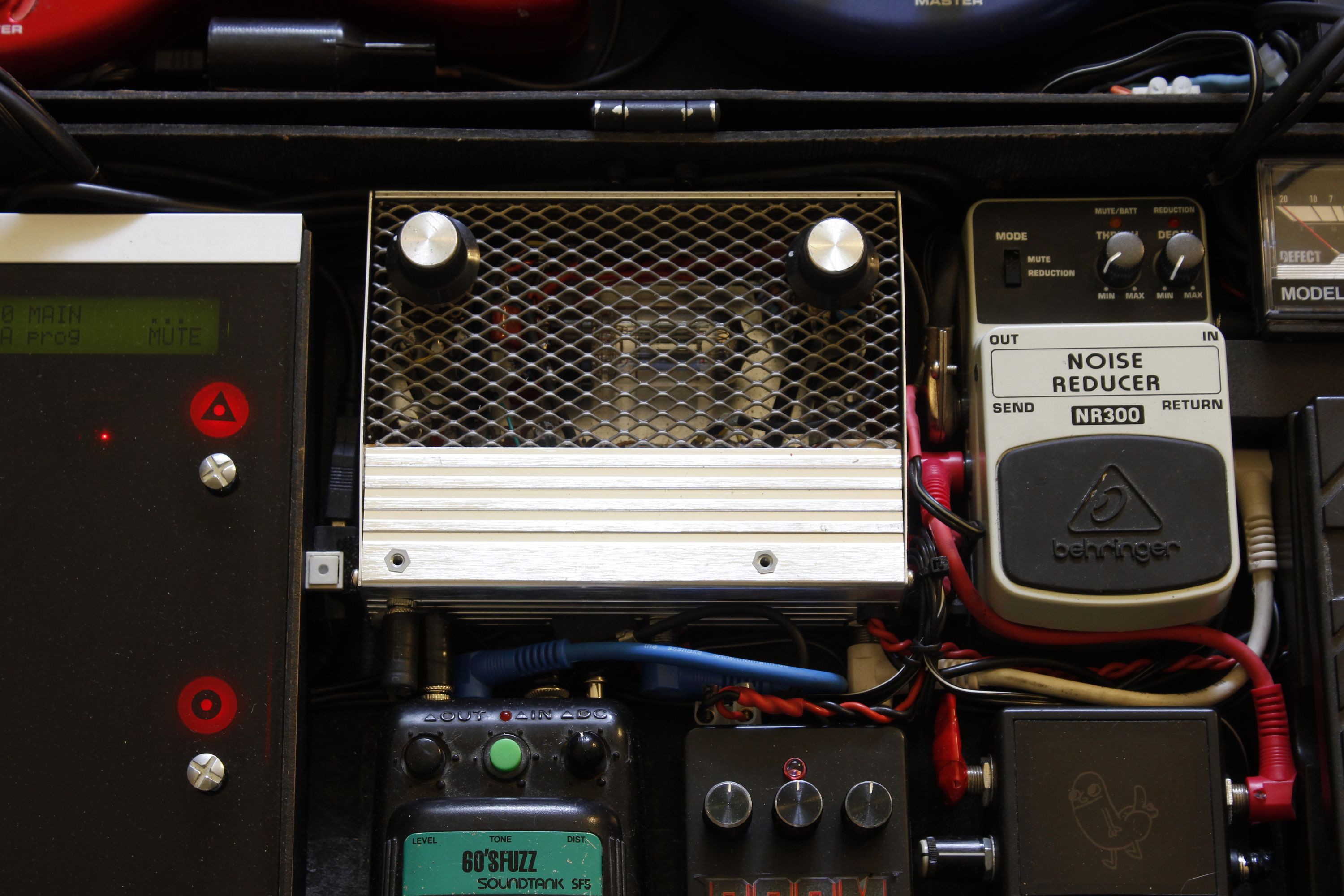
The most interesting part of it is probably the switching: it’s powered by a separate 9 V supply (shared with the rest of the pedals), which allows me to turn off the tube PSU when I’m not using it (close to always). This prevents unnecessary wear on the heater and interference from the HV plate and high current heater rails while still passing the signal in bypass mode.
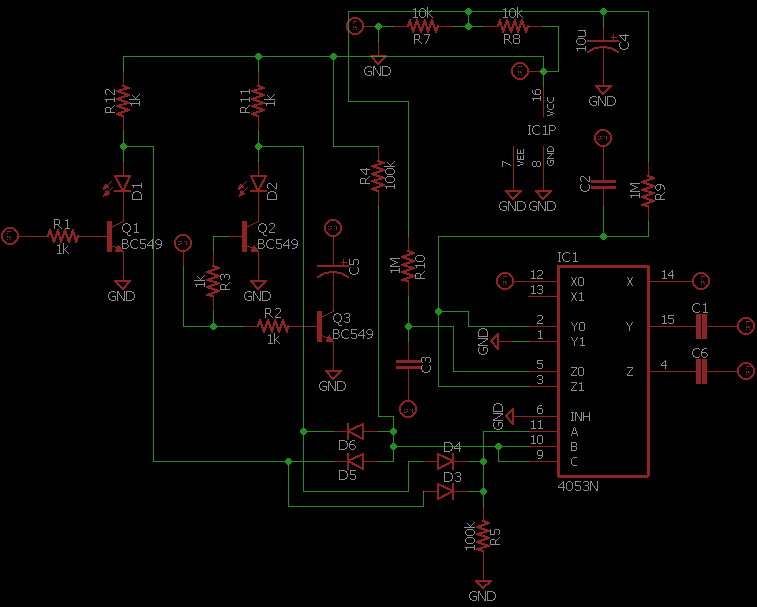
Oh, and the name comes from this brilliant YouTube comment:

 FiveseveN
FiveseveN
Discussions
Become a Hackaday.io Member
Create an account to leave a comment. Already have an account? Log In.